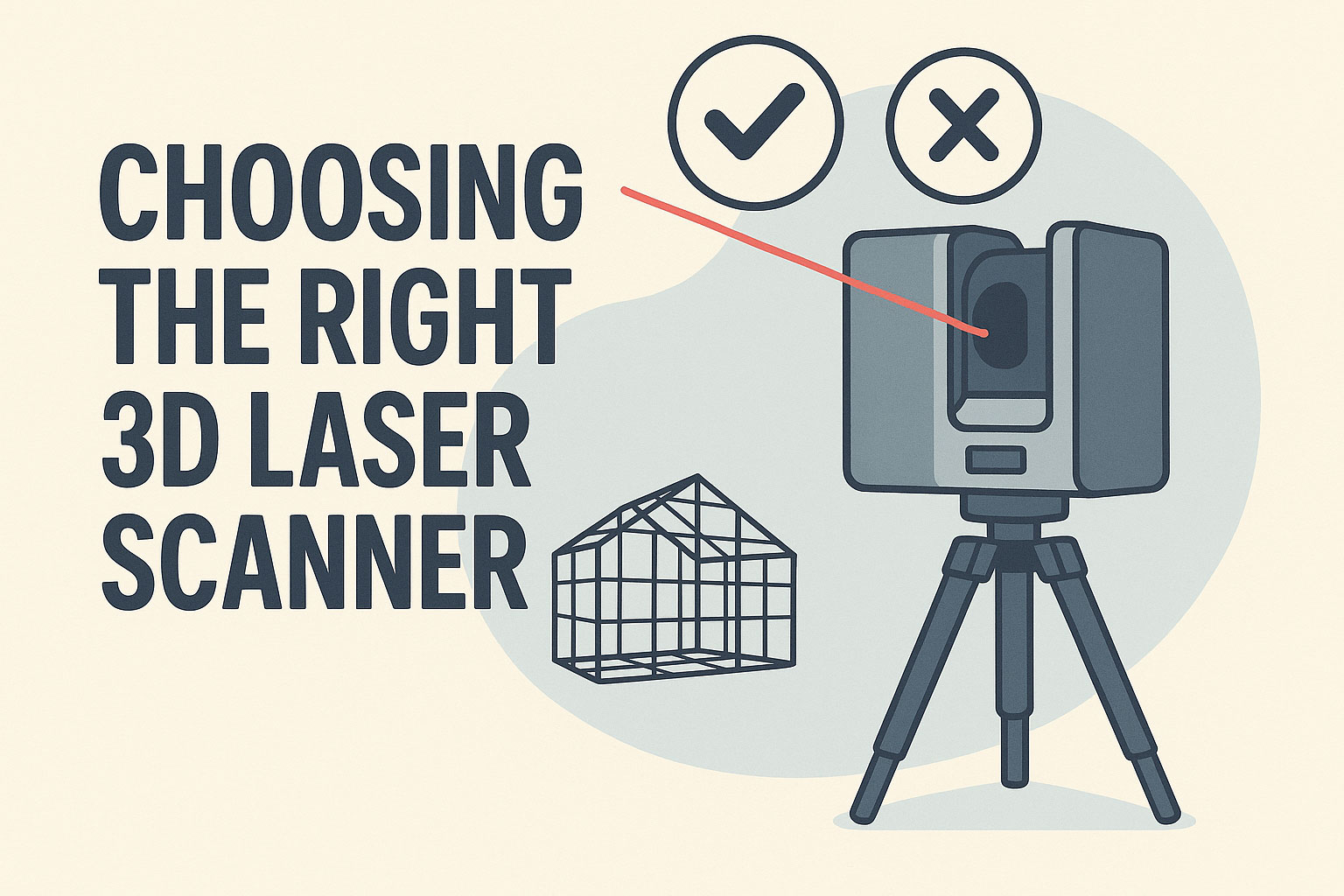Choosing the right 3d laser scanner can feel overwhelming, investing in a 3D laser scanner can transform your surveying workflow—but with so many models and features available.

In this guide, we’ll walk you through the key factors to consider when selecting the best 3D laser scanner for your specific surveying needs.
1. Define Your Primary Use Case
Start by identifying the main purpose of your scanner. Are you:
- Capturing existing buildings for BIM modeling?
- Scanning roadways and infrastructure?
- Surveying historical sites for preservation?
- Working in indoor or confined environments?
Different use cases require different specs in terms of range, accuracy, and portability.
2. Consider Scanning Range and Accuracy
Long-range scanners (e.g. up to 500m) are ideal for large outdoor sites like quarries or bridges, while short-range high-accuracy scanners excel indoors or on detail-critical tasks.
Always match the scanner’s accuracy level (in mm) to your project’s tolerance requirements.
3. Check the Scanning Speed
The scanning speed, typically measured in points per second (e.g. 500,000+), affects how fast you can complete fieldwork. High-speed scanners can reduce survey time, especially on large projects.
4. Evaluate Portability and Setup Time
If you work on multiple sites or remote areas, portability is critical. Choose a compact, lightweight scanner with fast setup time. Some models are tripod-mounted, while others are handheld or drone-compatible.
5. Software Compatibility
Ensure your scanner works seamlessly with your preferred software—whether it’s Autodesk ReCap, FARO SCENE, or Trimble RealWorks. Post-processing capabilities like automatic registration and meshing can save hours of work.
6. Battery Life and Storage
Don’t overlook battery capacity, especially for fieldwork without power access. Also, look for high-capacity storage or external media support to avoid data loss during long scans.
7. Compare Brands and Models
Popular brands include Stonex, Trimble, Leica, FARO, and Z+F. Each offers different strengths:
- Stonex X300: Rugged, reliable for outdoor scanning
- Trimble TX8: High-speed with large coverage
- Leica RTC360: Lightweight, easy to use on-site
Compare specs and read user reviews before committing to a purchase.
8. Set a Realistic Budget
Prices vary widely—from $10,000 to over $80,000 depending on features. Consider:
- Upfront hardware costs
- Software license fees
- Training and support availability
Make sure you’re investing in a solution that delivers ROI based on your project type and frequency.
Need Help Deciding?
Our experts can help you compare models and features. Check out our in-depth 3D scanner comparison guide or browse our top-rated equipment at our shop.
Conclusion
Choosing the right 3D laser scanner isn’t just about specs—it’s about matching your gear to your goals. By understanding your project needs and evaluating the right features, you’ll make a smarter investment and boost productivity.

Leave a Reply